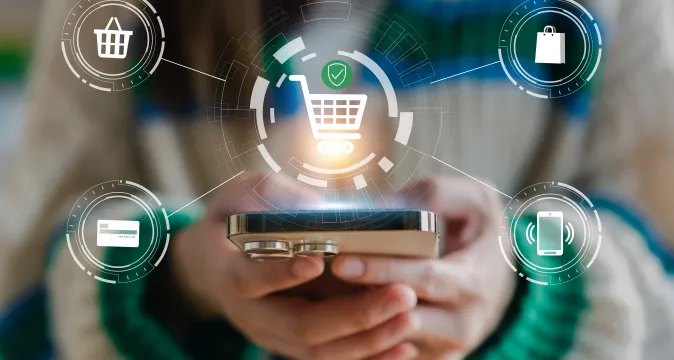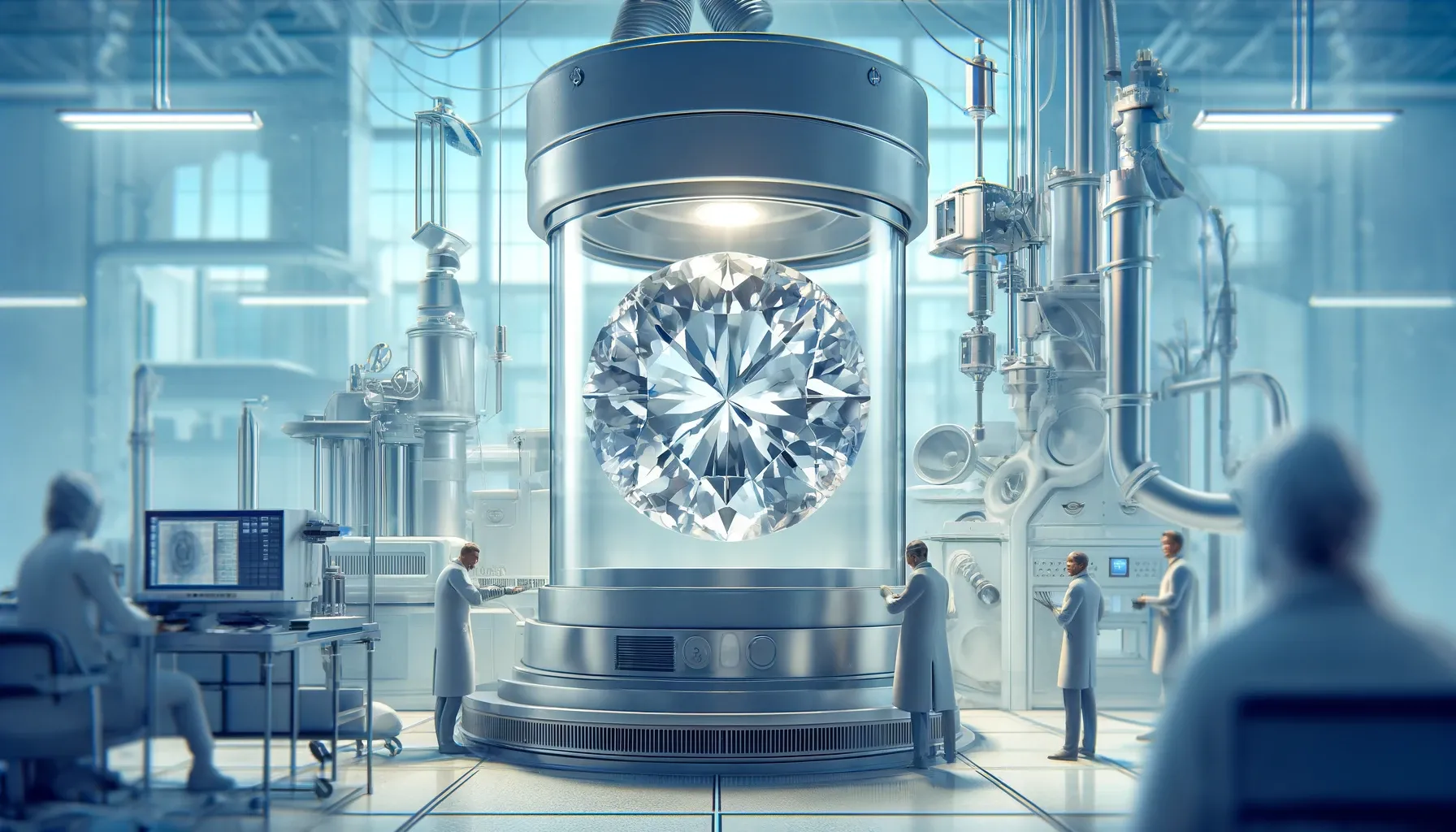
Published: Tuesday, July 9th, 2024
Lab-grown diamonds have become a popular choice in the diamond marketplace. Whether you're looking to buy, sell, or pawn a diamond, it's crucial to understand the key differences to make informed decisions.
Natural diamonds are the result of millions of years of geological processes, while lab-grown diamonds are created in a controlled laboratory environment using advanced techniques. Despite their different origins, lab-grown diamonds are chemically, physically, and optically identical to their natural counterparts. They are just as “real” as natural diamonds.
As these lab-grown diamonds rapidly rise in popularity, younger crowds are drawn to their unique characteristics. With this change in attitude, the conversation regarding natural versus lab-grown diamonds appears to be shifting.
The Difference of Natural vs. Lab Grown Diamonds – Unveiled
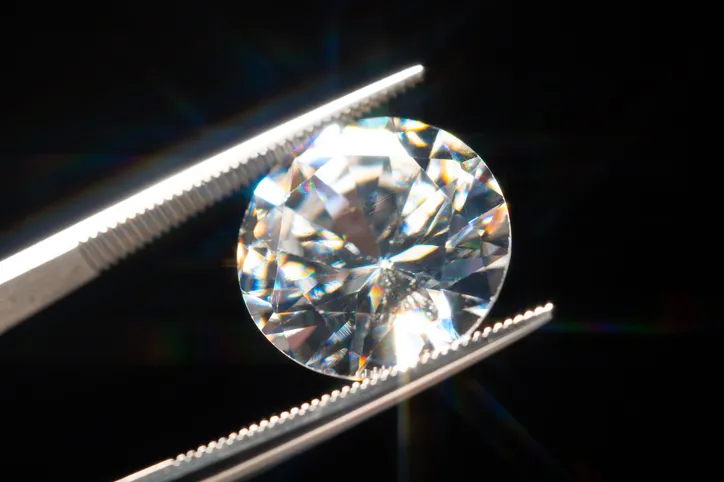
Let’s unearth the technical characteristics of natural diamonds and lab-grown diamonds to explore what makes them unique!
- Natural Diamonds – Natural diamonds are the result of millions of years of geological processes deep within the Earth's mantle. Formed over billions of years under extreme pressure and heat, these diamonds are mined from the earth through specialized mining techniques. These stones are prized for their rarity, exceptional brilliance, and the captivating stories held within.
- Lab-Grown Diamonds – Lab-grown diamonds are created in a controlled laboratory environment using advanced techniques and processes. These processes include advanced technological feats that are achieved by mimicking natural growth conditions. The two primary methods are High Pressure High Temperature (HPHT) and Chemical Vapor Deposition (CVD).
- High Pressure High Temperature (HPHT) – This method is used to grow diamonds in a laboratory setting by recreating the high pressure and high temperature conditions found deep within the Earth's mantle where natural diamonds form. It involves placing a small diamond "seed" or carbon source in a chamber and subjecting it to extreme pressure (around 1.5 million pounds per square inch) and a temperature (around 2,700°F) to facilitate the growth of a new diamond around the seed2.
- Chemical Vapor Deposition (CVD) – This is a vacuum deposition method used to produce high-quality, high-performance solid materials. It involves exposing a surface to one or more unstable "starter” chemicals, which then react and/or decompose on the surface to produce the desired thin film or coating3.
As you can see, lab-grown diamonds can undergo different processes to produce the same end-result. These two technological processes have unquestionably changed the entire diamond industry.
Are Lab-Grown Diamonds Real?

Yes, lab-grown diamonds are real! Lab-grown diamonds are identical to natural diamonds in terms of their chemical composition and physical properties. In other words, like natural diamonds, lab-grown diamonds have the same carat, color, clarity, and cut based on the “4 Cs”.
When a customer brings gems or diamonds to get evaluated, there are a handful of things a pawnbroker must consider:
- Carat weight – measures a diamond’s weight.
- Color – references the absence of color within a diamond.
- Clarity – assesses small imperfections within a diamond.
- Cut – the measurement of how well–proportioned a diamond’s dimensions are, including its brilliance and balance.
They exhibit the same brilliance as mined diamonds, making it nearly impossible to distinguish them with the naked eye.
Are Lab-Grown Diamonds Cheaper than Natural Diamonds?

Generally, yes. Lab-grown diamonds are typically 30-50% less expensive than natural diamonds of the same quality1. This is due to the controlled production process and the absence of mining costs commonly associated with natural diamonds. There are fewer steps and people in the process, so customers get it at a better price.
Therefore, this makes the resale value of lab-grown stones generally lower, as they are easier to produce. Notably, even real diamonds are coming down in value as the entire industry is undergoing considerable changes.
Are Lab-Grown Diamonds A Better Purchase?
It depends on your preferences. The purchasing price of lab-grown diamonds is generally lower than that of natural diamonds, as they are perceived to be less rare and valuable1. Moreover, if wanting to pawn a lab grown diamond you will typically get less than pawning a natural diamond.
However, if your primary focus is on the beauty and quality of the diamond, rather than its purchasing price or resale potential, lab-grown stones can be a viable and more affordable option.
Below is a graph4 comparing the differences of natural and lab-grown diamonds in shape, carat, color, clarity, cut, polish, symmetry, fluorescence, measurement, and most importantly, price:
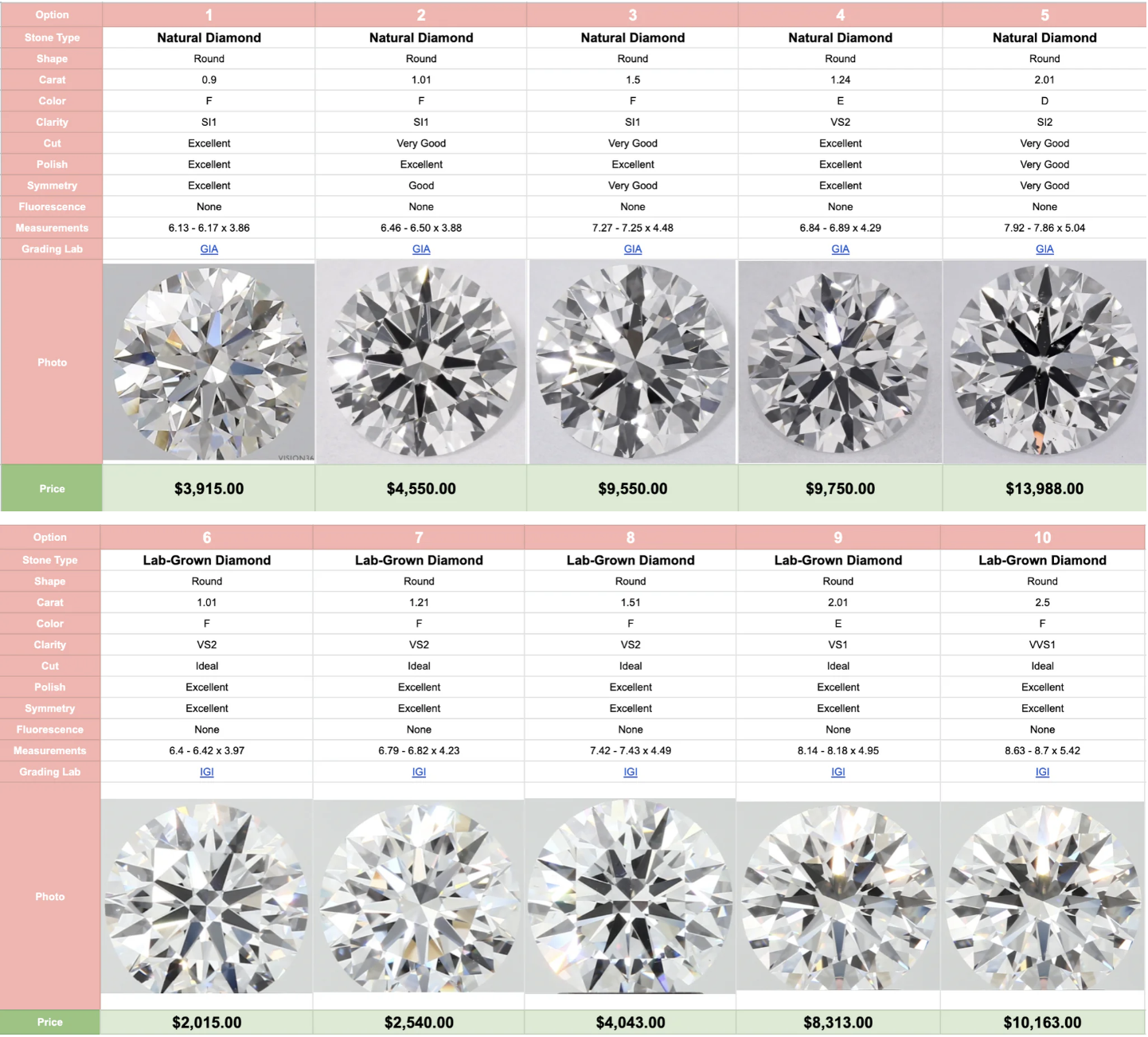
As you can see, it’s generally cheaper to buy a lab-grown diamond versus a natural diamond for the same characteristics. This is the reason many buyers are opting for a lab-grown diamond over a “real” diamond. Not to mention the environmental and ethical reasons.
Are Lab-Grown Diamonds Good for The Environment? What About Ethical Considerations?
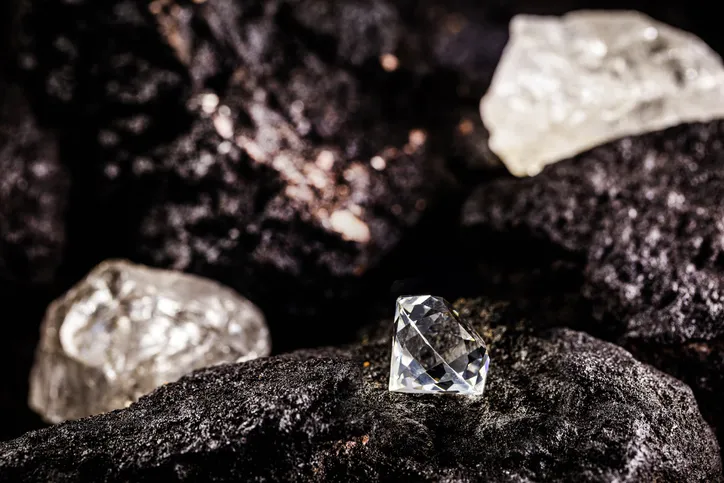
Yes, lab-grown diamonds are much better for the environment than natural diamonds. Lab-grown diamonds are often marketed as a more ethical alternative, with a guarantee of conflict-free origins.
With natural diamonds, mining can have significant environmental impacts, including ecosystem disruption, soil erosion, deforestation, and water use. The mining industry has been criticized for issues related to conflict diamonds (or "blood diamonds"), although initiatives like the Kimberley Process have been established to reduce these concerns. The Kimberley Process is an international certification established in 2003 to prevent the trade of "conflict diamonds"5.
Lab-Grown diamonds, however, have a smaller direct environmental footprint, as they require less land and water use. However, the energy-intensive production process, especially if not powered by renewable energy, can also be a concern. Nevertheless, this process is much more environmentally friendly in most if not all aspects of the production process.
Should I Buy a Lab-Grown Engagement Ring?

If your partner is open to the idea, a lab-grown ring can be an excellent way to get your dream diamond ring on a budget. The only potential consideration is whether the "natural diamond" aspect is important for sentimental or traditional reasons.
Considering a lab-grown diamond engagement ring. The significant cost savings, ethical and environmental benefits, and customization options make lab-grown diamonds a very compelling choice.
To reduce expenses and the stress associated with buying engagement rings, you can put your lab-grown diamond on layaway with just 10% down (plus fees) and pay it off over time through our EZ+ app!
Ensuring Authenticity: How to Identify Natural Diamonds
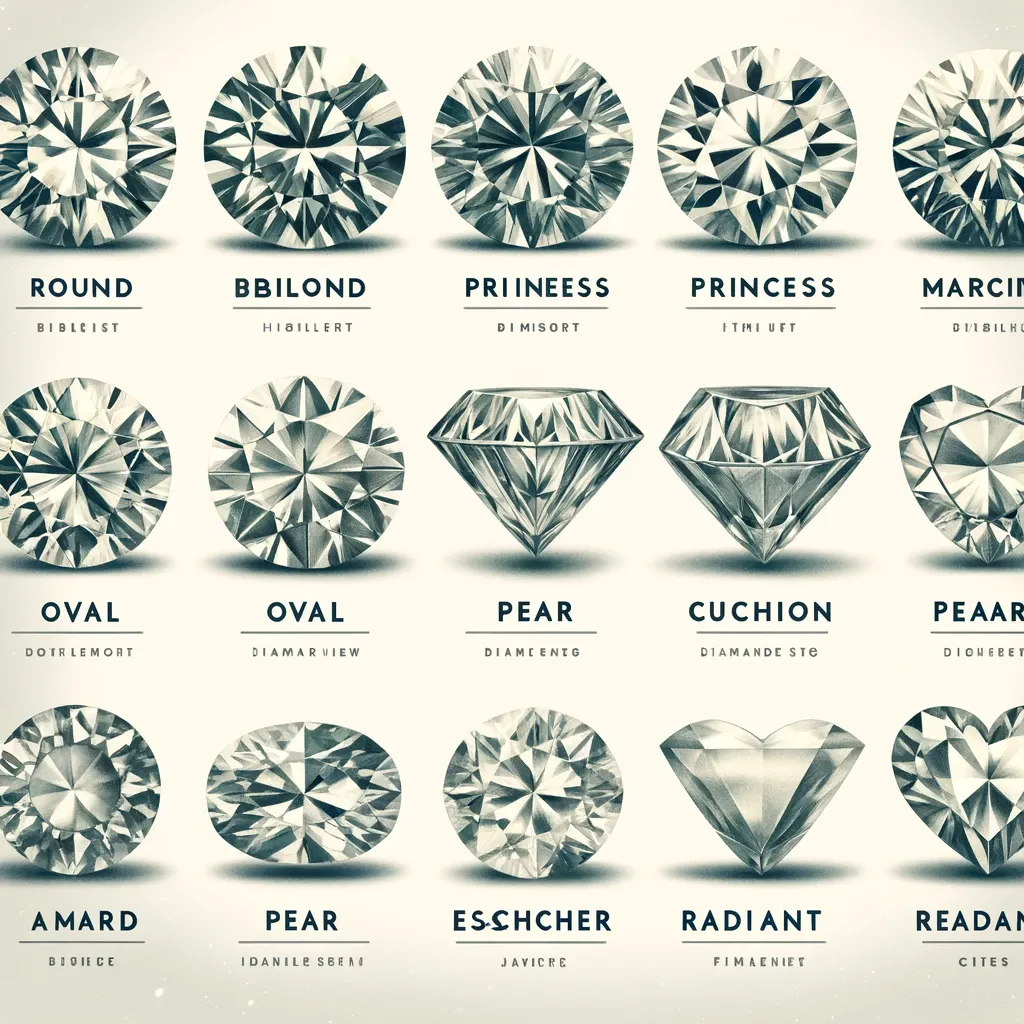
At Value Pawn, we recognize that the authenticity of diamonds is crucial for our customers to make well-informed choices when buying jewelry. By maintaining rigorous standards for authenticity, we help protect and enhance the buying experience at Value Pawn. This commitment allows our customers to trust the integrity of the jewelry they select from us, making informed decisions with peace of mind.
The Bottom Line
- Lab-grown diamonds are chemically and optically the same as natural diamonds. Even trained gemologists cannot distinguish between them using just the naked eye or a standard diamond loupe. Differences can generally only be detected with specialized equipment.
- All lab-grown diamonds undergo one of two creation processes: High Pressure High Temperature (HPHT), or Chemical Vapor Deposition (CVD). Both processes produce the same results.
- We recommend looking for a GIA (Gemological Institute of America) certification to verify the authenticity of any type of diamond.
- Choosing a lab-grown diamond could offer savings of up to 30-50% compared to the cost of a natural diamond. This number might even drop with time as new techniques and processes are discovered.
- Like natural diamonds, lab-grown diamonds have the same carat, color, clarity, and cut based on the “4 Cs”. The only difference is the origin and price.
- Lab-grown diamonds are more environmentally and ethically friendly as they don’t require enormous amounts of resources and people to produce them.
- Lab-grown engagement rings are a great idea as they offer the same look but may be half the cost of a natural diamond ring.
Now You Can Confidently Choose Natural vs. Lab Grown Diamonds
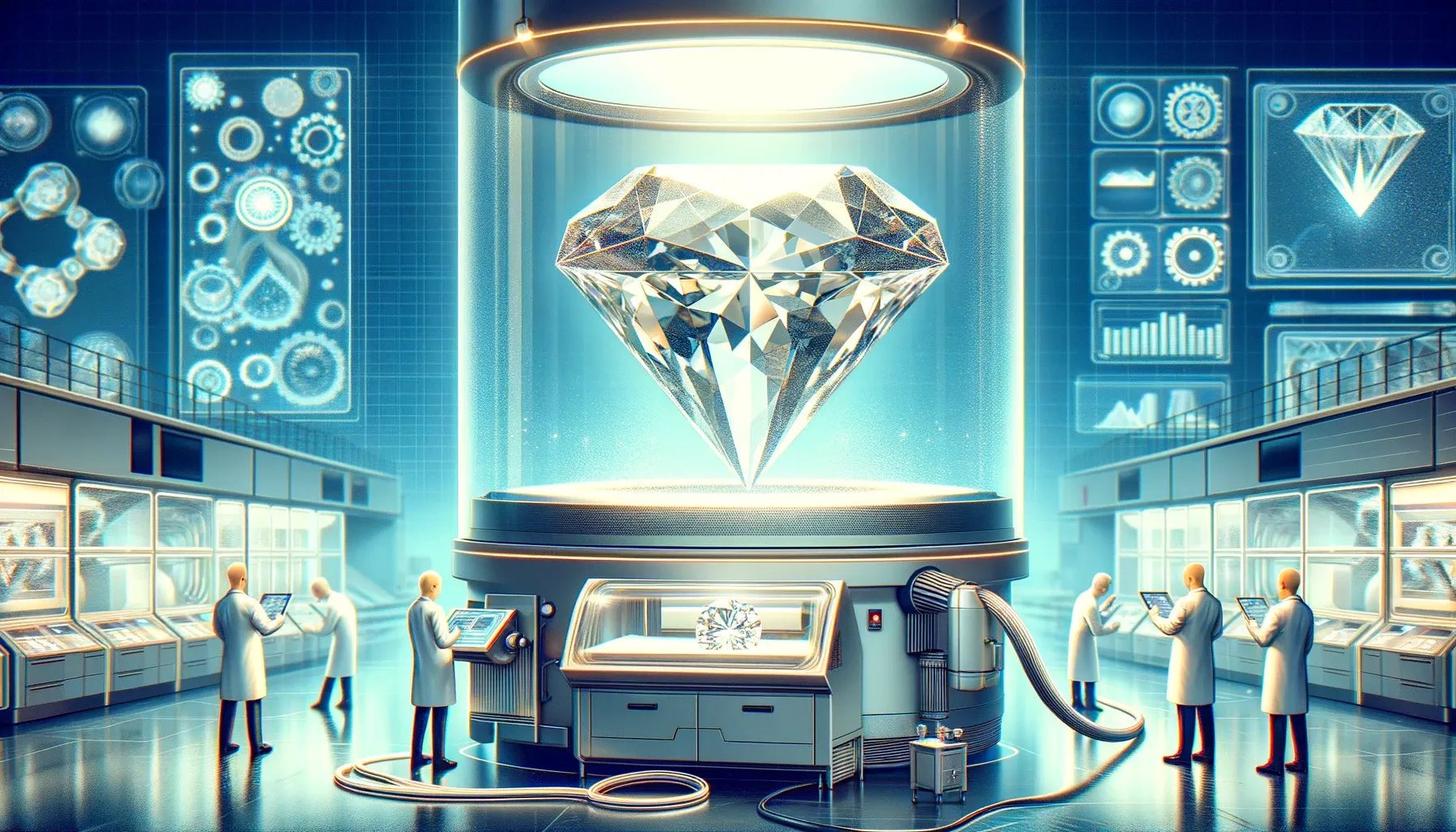
Whether you're drawn to the timeless allure of natural diamonds or the modern appeal of lab-grown stones, Value Pawn is here to guide you through the process. Our extensive inventory of pre-owned luxury goods, including a wide selection of lab-grown and natural diamonds, allows you to explore your options and find the perfect fit for your needs and budget.
Ultimately, as your diamond jewelry store, the choice between natural and lab-grown diamonds is a personal one, and Value Pawn is committed to providing you with the information and support you need to make the best decision.
If you already have a diamond ring, you can pawn diamond rings at Value Pawn, or you can get pawn loans for diamonds if you only have the diamond(s).
Visit us today to discover the world of diamonds or unlock the value of your prized possessions.
Citations
[1] https://www.nathanalanjewelers.com/lab-diamonds-vs-natural-diamonds

